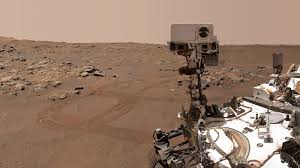NASA’s Mars Sample Return (MSR) mission is one of the most ambitious and complex undertakings in space exploration history. With an estimated cost of $11 billion and multiple launches required, NASA is seeking innovative ways to reduce expenses while achieving mission goals. Recently, NASA awarded nearly $1.5 million each to seven companies to explore more cost-effective methods for this mission. This article delves into the details of these studies, the challenges faced by the MSR program, and the potential impacts on future space missions.
The Vision Behind the Mars Sample Return Mission
Mission Objectives
The primary objective of the MSR mission is to collect samples from the Martian surface and return them to Earth for detailed analysis. These samples will provide unprecedented insights into the Red Planet’s geology, climate history, and potential for past life.
Scientific Significance
Bringing Martian samples to Earth allows scientists to utilize advanced laboratory techniques unavailable on Mars, enhancing our understanding of the planet’s composition and history. This mission is expected to pave the way for future human exploration.
Financial Challenges and Budget Concerns
High Costs and Financial Constraints
The MSR mission’s estimated cost of $11 billion has raised concerns about financial sustainability. The budget includes the development of new technologies, multiple Mars launches, and safe return mechanisms.
Strategies for Cost Reduction
To address these financial challenges, NASA is exploring various cost-effective strategies. The $1.5 million grants awarded to seven companies are part of this effort to identify innovative solutions and optimize resource allocation.
The Companies Awarded NASA Grants
Overview of Selected Companies
NASA has selected seven companies, each bringing unique expertise and innovative approaches to the table. These companies will conduct studies to propose more cost-effective methods for the MSR mission.
Key Areas of Focus
The focus areas for these studies include propulsion systems, landing technologies, sample collection methods, and safe return strategies. Each company’s proposal will be critical in shaping the future of the mission.
Innovative Approaches and Proposed Solutions
Advanced Propulsion Technologies
One of the primary areas of research is the development of advanced propulsion systems that can reduce travel time and fuel consumption. Companies are exploring new engine designs and alternative fuel options.
Efficient Sample Collection Techniques
Improving sample collection methods is another focus area. Innovative tools and robotic systems are being designed to ensure precise and efficient sample gathering, minimizing the need for multiple collection attempts.
Safe Return Mechanisms
Ensuring the safe return of Martian samples is crucial. Companies are working on developing reliable re-entry and landing systems that can protect the samples from contamination and damage during their journey back to Earth.
Impact on Future Space Missions
Technological Advancements
The innovations resulting from these studies will not only benefit the MSR mission but also contribute to future space missions. New technologies and methodologies developed through this process can be adapted for other planetary exploration endeavors.
Cost-Efficiency in Space Exploration
By identifying cost-effective solutions, NASA aims to set a precedent for future missions. Reducing costs without compromising mission objectives can make space exploration more sustainable and accessible.
Challenges and Potential Solutions
Technical Hurdles
Despite the promising innovations, technical challenges remain. Developing new technologies within budget constraints and ensuring their reliability in harsh space environments are significant hurdles.
Collaborative Efforts
Collaboration between NASA, private companies, and international partners is essential to overcoming these challenges. Shared expertise and resources can accelerate the development and deployment of innovative solutions.
The Road Ahead for the Mars Sample Return Mission
Timeline and Milestones
The MSR mission is scheduled to launch in the late 2020s, with several key milestones leading up to the main mission. These include the development and testing of new technologies and multiple preparatory missions to Mars.
Future Prospects
The successful implementation of cost-effective solutions will be critical in ensuring the mission’s success. Continued innovation and collaboration will be key drivers in achieving the mission’s ambitious goals.
The Mars Sample Return mission represents a significant leap forward in our quest to explore the universe. NASA’s initiative to award nearly $1.5 million each to seven companies for cost-effective studies highlights the importance of innovation and collaboration in overcoming financial challenges. By addressing these challenges, NASA aims to unlock new possibilities for space exploration, setting the stage for future missions that can delve even deeper into the mysteries of our solar system.




